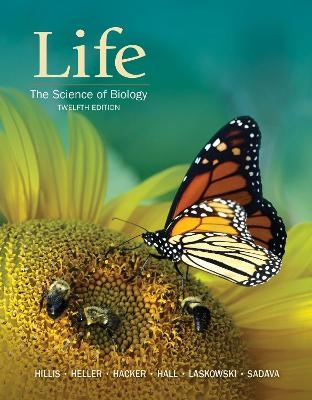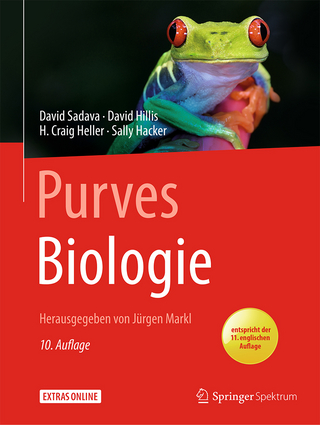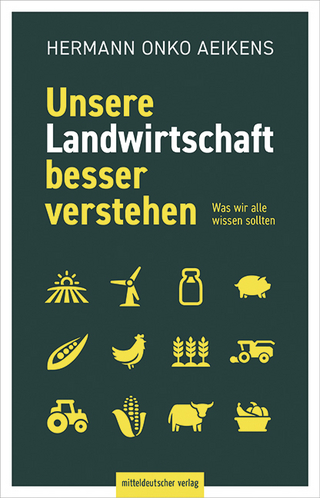
Life: The Science of Biology
W.H.Freeman & Co Ltd (Verlag)
978-1-319-31578-8 (ISBN)
- Titel ist leider vergriffen;
keine Neuauflage - Artikel merken
Life: The Science of Biology is engaging, active, and focused on skills
The new 12th edition of Life: The Science of Biology continues to be engaging, active, and focused on teaching the skills that students need to master the majors biology course.
New pedagogical features work in conjunction with powerful updates to the online suite of materials in Achieve to support the mission of Life by teaching students the skills and understanding of experimentation and data they need to succeed in introductory biology and ultimately in their future STEM careers.
Life’s potent combination of expertly crafted media, assessment, pedagogy and engagement makes this new edition the best resource yet for biology students.
David M. Hillis is the Alfred W. Roark Centennial Professor in Integrative Biology at the University of Texas at Austin, where he also has directed the Center for Computational Biology and Bioinformatics, the Biodiversity Center, and the School of Biological Sciences. Dr. Hillis has taught courses in introductory biology, genetics, evolution, systematics, and biodiversity. David E. Sadava is the Pritzker Family Foundation Professor of Biology, Emeritus, at the Keck Science Center of Claremont McKenna, Pitzer, and Scripps, three of The Claremont Colleges. In addition, he is Adjunct Professor of Cancer Cell Biology at the City of Hope Medical Center. Twice winner of the Huntoon Award for superior teaching, Dr. Sadava has taught courses on introductory biology, biotechnology, biochemistry, cell biology, molecular biology, plant biology, and cancer biology. H. Craig Heller is the Lorry I. Lokey/Business Wire Professor in Biological Sciences and Human Biology at Stanford University. He has taught in the core biology courses at Stanford since 1972 and served as Director of the Program in Human Biology, Chairman of the Biolo-gical Sciences Department, and Associate Dean of Research. Dr. Heller is a fellow of the American Association for the Advancement of Science and a recipient of the Walter J. Gores Award for excellence in teaching and the Kenneth Cuthberson Award for Exceptional Service to Stanford University. Sally D. Hacker is Professor at Oregon State University where she has been a faculty member since 2004. She has taught courses in introductory ecology, community ecology, invasion biology, field ecology, and marine biology. She was awarded the Murray F. Buell Award by the Ecological Society of America and the Young Investigator Prize by the American Society of Naturalists. David W. Hall is an Associate Professor of Genetics at the University of Georgia, where he was the recipient of the Sandy Beaver Excellence in Teaching Award in 2013. Recent work includes using mathematical models to address the evolution of meiotic drive, the rate and pattern of molecular evolution in social insects, and early sex chromosome evolution. In the lab, he utilizes different yeast species to study spontaneous mutations using a combination of both mutation-accumulation and adaptation experiments. Marta Laskowski is a Professor in the Biology Department at Oberlin College. Dr. Laskowski has mentored undergraduate students in research and has taught introductory biology, skills-based first year seminars (Feeding the World), plant physiology, and plant development. She heads an effort at Oberlin, funded by the HHMI Inclusive Excellence program, to enhance the climate for and success of a diverse student population in STEM.
Part one The Science of Life and Its Chemical Basis
1 Studying Life
2 Small Molecules and the Chemistry of Life
3 Proteins, Carbohydrates, and Lipids
4 Nucleic Acids and the Origin of Life
Part two Cells
5 Cells: The Working Units of Life
6 Cell Membranes
7 Cell Communication and Multicellularity
Part three Cells and Energy
8 Energy, Enzymes, and Metabolism
9 Pathways that Harvest Chemical Energy
10 Photosynthesis: Energy from Sunlight
Part four Genes, Genomes, and Heredity
11 The Cell Cycle and Cell Division
12 Inheritance, Genes, and Chromosomes
13 DNA and Its Role in Heredity
14 From DNA to Protein: Gene Expression
15 Gene Mutation and Molecular Medicine
16 Regulation of Gene Expression
17 Genomes
18 Recombinant DNA and Biotechnology
Part five The Processes and Patterns of Evolution
19 Processes of Evolution
20 Reconstructing and Using Phylogenies
21 Evolution of Genes and Genomes
22 Speciation
23 The History of Life on Earth
Part six The Evolution of Diversity
24 Bacteria, Archaea, and Viruses
25 The Origin and Diversification of Eukaryotes
26 Plants without Seeds: From Water to Land
27 The Evolution of Seed Plants
28 The Evolution and Diversity of Fungi
29 Animal Origins and the Evolution of Body Plans
30 Protostome Animals
31 Deuterostome Animals
Part seven Flowering Plants: Form and Function
32 The Plant Body
33 Transport in Plants
34 Plant Nutrition
35 Regulation of Plant Growth
36 Reproduction in Flowering Plants
37 Plant Responses to Environmental Challenges
Part eight Animals: Form and Function
38 Physiology, Homeostasis, and Temperature Regulation
39 Animal Hormones
40 Immunology: Animal Defense Systems
41 Animal Reproduction
42 Animal Development
43 Neurons, Glia, and Nervous Systems
44 Sensory Systems
45 The Mammalian Nervous System
46 Musculoskeletal Systems
47 Gas Exchange
48 Circulatory Systems
49 Nutrition, Digestion, and Absorption
50 Salt and Water Balance and Nitrogen Excretion
51 Animal Behavior
Part nine Ecology
52 The Physical Environment and Biogeography of Life
53 Populations
54 Species Interactions
55 Communities
56 Ecosystems
57 A Changing Biosphere
| Erscheinungsdatum | 31.01.2020 |
|---|---|
| Zusatzinfo | 1268 p. |
| Sprache | englisch |
| Maße | 155 x 235 mm |
| Themenwelt | Naturwissenschaften ► Biologie |
| ISBN-10 | 1-319-31578-X / 131931578X |
| ISBN-13 | 978-1-319-31578-8 / 9781319315788 |
| Zustand | Neuware |
| Haben Sie eine Frage zum Produkt? |
aus dem Bereich


